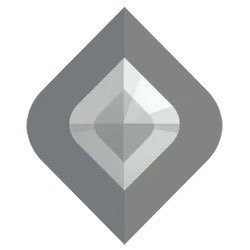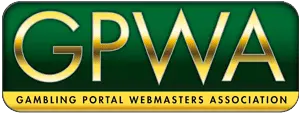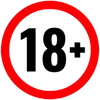This website utilizes anonymous usage data to provide the most helpful experience for visitors. Information about how the site is accessed is stored and analyzed without identifying individual users. This allows our team to understand which sections of the website are found most useful so we can focus our efforts on improving those areas for all users. We respect the privacy of those who access our content and aim to make the site as beneficial as possible for everyone.
- Crypto Betting
-
-
Crypto Available

First Deposit Bonus 125% Up To $1000

100% up to $100 (or equivalent in crypto)
-
- eSports Betting
-
-
Crypto Available

First Deposit Bonus 125% Up To $1000

100% up to $100 (or equivalent in crypto)
-
- By Sport
-
-
Crypto Available

First Deposit Bonus 125% Up To $1000

100% up to $100 (or equivalent in crypto)
-
- By Type
-
-
Crypto Available

First Deposit Bonus 125% Up To $1000
-
- SportsBooks
-
-
Crypto Available

First Deposit Bonus 125% Up To $1000

100% up to $100 (or equivalent in crypto)
-
- Odds & Picks
- Education
Unraveling the Valorant Ranking System: A Comprehensive Guide
Valorant, the strategic shooter brainchild of Riot Games, has seized the eSports world with its complex mechanics and fierce ranking battles. Grasping the nuances of its ranking system is key for those on a quest to climb the competitive rungs and clinch the crown of excellence. Dive into this guide for a thorough dissection of Valorant’s ranking hierarchy, its inner workings, and the tactics to scale the competitive peaks.
The Ranking Mechanics
Kicking off your Valorant adventure, you’ll dive into a batch of placement matches that stamp your starting rank. How you fare in these initial games lays the groundwork for your competitive path. It’s not just about whether you win or lose; the system really zeroes in on your personal show during these bouts.

Climbing the Valorant ladder hinges on your Rank Rating (RR) – think of it as your competitive currency. Bagging wins could net you a cool 10 to 50 RR points, while stumbles in matches might set you back by 10 to 30 points. But here’s the kicker: the RR swing is nudged by a handful of factors, making each match a strategic play:
- Match Outcome: Winning grants RR points, while losing deducts them. If a player’s RR falls to zero, they may risk demotion to a lower tier or rank.
- Match Margin: A decisive victory or loss will have a greater impact on the RR change.
- Personal Performance: Especially in lower ranks, individual performance can significantly affect RR changes.
- Team Average Rank: Playing against higher-ranked opponents can yield more RR points for a win.
Scaling Valorant ranks is all about racking up those RR points, hitting that sweet spot above 100 in your current tier’s cap. Say you’re chilling at Gold 3 with a neat 100 RR; you’re now primed to jump into the Platinum 1 pool.
Every rung on the Valorant ladder demands more than just quick reflexes; it’s a test of skill, strategic smarts, and a deepening grasp of the game’s intricacies. To ascend through this competitive hierarchy, players must constantly evolve and refine their approach.

Iron (Iron 1, Iron 2, Iron 3)
- Skill Level: Beginner
- Characteristics: Iron rankers in Valorant are usually fresh on the scene, maybe even newbies to the whole first-person shooter gig. They’re still getting the hang of the essentials, like lining up that perfect shot, getting a feel for the map, and figuring out how to wield those abilities like a pro.

Bronze (Bronze 1, Bronze 2, Bronze 3)
- Skill Level: Basic
- Characteristics: Bronze-level players? They’ve got the basics of the game down but haven’t quite nailed the steady play yet. They’re on their way to getting savvy with the maps, the agents’ powers, and the overall game plan, but pulling it all off smoothly? That’s still a bit hit or miss.

Silver (Silver 1, Silver 2, Silver 3)
- Skill Level: Intermediate
- Characteristics: Silver players are getting a decent grip on how the game ticks and the strategies to roll with. Their aim’s getting sharper, and they’re upping their tactical game from the Bronze days. Yet, stitching it all together consistently and nailing the team dynamics? That’s where they’re finding the going a bit tough.

Gold (Gold 1, Gold 2, Gold 3)
- Skill Level: Competent
- Characteristics: Gold players are the real deal, showing off some solid gameplay skills and a good handle on the strategic side of things. They’ve got the knack for putting game plans into action with a bit more finesse and are beginning to find their groove with specific roles or agents.

Platinum (Platinum 1, Platinum 2, Platinum 3)
- Skill Level: Advanced
- Characteristics: Platinum players? They’re pretty clued-up on the game and its inner workings, boasting sharp aim and savvy strategy skills. They’re ace at adapting to the twists and turns of each game, and when it comes to team play and syncing up, they’re a step above the rest, leaving those lower ranks in the dust.

Diamond (Diamond 1, Diamond 2, Diamond 3)
- Skill Level: Expert
- Characteristics: Diamond players are top-notch, with their aiming game, strategic thinking, and game sense all hitting high notes. They’ve got a tight grip on the game’s subtleties and can juggle multiple agents like pros. Plus, they’ve got a sixth sense for sussing out the enemy’s game plan and can switch things up on the fly, mid-game.

Immortal (Immortal 1, Immortal 2, Immortal 3)
- Skill Level: Elite
- Characteristics: Landing in the Immortal rank means you’re part of the elite crew, a cut above in every Valorant facet, from solo skills to the whole squad strategy scene. These folks have killer aim, a mastermind for tactics, and keep cool when the heat is on. Immortals are the regulars in the competitive circuit, packing a hefty dose of game-time under their belts.

Radiant
- Skill Level: Professional
- Characteristics: Radiant sits at the very peak of Valorant’s ranking pyramid, home to the game’s crème de la crème. These players dazzle with their exceptional prowess, strategic genius, and unwavering top-tier play. You’ll spot Radiants frequently in the pro esports arena, where they wield significant influence, often tipping the scales in their favor during high-stakes matches.
Ascendant Rank: The Game Changer
Valorant’s Ascendant rank is the new kid on the block in the competitive scene, snugly fitting between Diamond and Immortal. It’s like the game’s way of fine-tuning the ranking ladder, making it easier to spot the differences in player skills and giving the high-flyers a new rung to aim for.

Ascendant is the bridge over troubled waters, smoothing out the journey from the sharpshooters in Diamond to the Immortal big leagues. Gone are the days of the jarring jump in competition levels, thanks to this well-thought-out addition. Riot Games really stepped up, sculpting a more refined hierarchy to let players square off in a zone that’s just right for their level.
In the grand scheme of Valorant’s competitive world, the Ascendant rank is a game-changer, carving out a clearer, more methodical path for those with their eyes on the prize, climbing up the competitive ranks.
Deciphering Rank Distribution
Grasping the distribution of rank levels among Valorant’s player base is key in the competitive arena. Riot Games shed light on the scene: until the end of 2022, players populating the ranks beneath Immortal were in abundance. Yet, the tide shifted in 2023, witnessing a surge in contenders ascending to loftier tiers. Here’s how the ranking looks like now:

Role of Player Performance in Ranking
Valorant’s ranking ladder isn’t just a number game; it’s a deep dive into how well you swing between solo skills and team tactics. The gist? It’s all about how you strut your stuff in the arena, using your performance to peg your rank and ensure the fights are fair and fierce.

And it’s not just about winning or losing; it’s how you play the game and back up your squad that really counts. Here’s the lowdown on what the system keeps an eye on:
- KDA – Kill/Death/Assist Ratio: This is your report card on in-game impact. Sporting a hefty KDA often means you’re killing it (literally) and giving your team a hefty leg-up.
- Economic Efficiency: Got a knack for budgeting those credits? Whether you’re splurging or saving, how you handle your in-game wallet can tip the scales in your matches, and yeah, it’s a big deal for your rank.
- Objective Play: Those mission-critical moves, like planting the Spike or commandeering site control, are gold. They show you’re not just about the frags but about getting the job done.
- Consistency: Hitting the high notes match after match? That’s the ticket. Valorant digs players who bring their A-game time and again, proving their mettle in the long run.
- Clutch Moments: Thriving when the pressure’s sky-high and flipping a dire match on its head? That’s the stuff of rank-climbing legends. Pulling off these feats can give your rank a serious hike.
So, in the wild world of Valorant, how you roll with these metrics can make or break your climb up the competitive ladder.
Individual Performance vs. Team Dynamics
Sure, your personal stats grab the spotlight, but Valorant’s rank-o-meter seriously vibes with how you sync up with your squad and nail those wins. Snagging a victory is what it’s all about, and the game throws props to those who help steer the team to glory. It’s this sweet mix of solo skills and team tactics that gets the nod in the rank-up hustle, making sure your lone-wolf feats and group genius both get their due in the climb.
Rank Reset Phenomenon in Valorant
Ever wondered why your Valorant rank takes a nosedive after each Act or Episode? It’s all about keeping the playing field level and ensuring your skills are bang up to date. Developers hit the reset button on ranks in Valorant with each new Act/Episode, aiming for a precise appraisal of your gaming prowess.
Here’s the lowdown: once an Act wraps up, your rank gets a fresh start. But don’t sweat it; a single match is all it takes to reclaim your standing or land somewhere in the vicinity.
For the crème de la crème, those basking in the Radiant glow, the stakes are a tad different. Belonging to the exclusive 0.04% club, Radiants see the leaderboard wiped clean at Act’s end, with ratings universally trimmed by 10%. This adjustment levels the competitive terrain, preventing eternal dominion of the leaderboard by ensuring everyone earns their spot, time and again.
Rank Decay and Inactivity Penalties
Rank decay is like the slow drip-drip of your ranking juice when you’ve hit pause on the competitive grind for too long. It’s the game’s way of keeping things fresh, ensuring that the leaderboard is a lively snapshot of who’s who in the current play scene, not just a dusty hall of fame.
This ranking slip-slide kicks in after you’ve ghosted the game for a bit, with your hard-earned rank slipping away the longer you stay away from the competitive fray. It’s all about keeping the game’s pulse racing, making sure those who climb the ranks are really in the thick of it, not just resting on past laurels.
Then there’s the sting of inactivity penalties, the sidekick to rank decay, putting the brakes on too much downtime. These can slap you with anything from a rank downgrade to a timeout from competitive play, maybe even hitting the reset button on your rank.
Though rank decay and these penalties keep the game on its toes, they’re not without their critics. Some players reckon they’re a bit too harsh, particularly for folks who can’t help but step away from the game now and then.
Strategies for Ranking Up
To effectively climb the Valorant ranks, you should focus on several key aspects:
Focus on Skill Development
At the heart of it, climbing the ranks is all about leveling up your game. It’s not just about clocking more hours; it’s about playing with your brain in gear. Pinpointing your weak spots, whether that’s your aim, your game plan, how you position yourself, or your overall game awareness, is key. Then, it’s about getting down to business to buff up those areas. Dive into training modes, get cozy with aim trainers, and leverage any tool you can get your hands on to boost your in-game mojo.
Strategic Play and Game Knowledge
Getting the lowdown on the game’s meta, figuring out each character’s pros and cons, and the ins and outs of the maps or arenas can seriously up your game. Stay in the loop with the freshest patches, updates, and what’s hot in the competitive scene. Watching the pros in action and digging into tutorials can shed light on some killer strategies and moves, too.
Communication and Teamwork
Teamwork and chit-chat are pretty much the bread and butter of nailing it in competitive games. Rocking the role of a team player? That could totally flip the script from a facepalm loss to a fist-pump win. Make sure you’re on point with your comms, dishing out the deets that matter, and syncing up with your squad. Flexibility’s key too; stepping into whatever role or spot that’s calling for a hero can majorly boost your team’s shot at victory.
Analyzing and Learning from Games
Post-game breakdowns are your goldmine for learning, whether you’ve snagged a win or taken a hit. Tons of games throw in replay features or stats tools that can spotlight where you rocked and where you, well, didn’t. Get real with your self-review, but keep it constructive. The aim? Never stop leveling up your game.
Mental Resilience and Mindset
The mind game in competitive play is huge, seriously. Staying upbeat, taking losses as lessons, and keeping cool under pressure can really change the game for your rank. Nail down some solid, doable goals and don’t forget to pat yourself on the back for the small wins. It’s all about keeping that drive fired up.
Consistency and Regular Practice
Hitting the grind regularly and sticking to your practice routine? That’s your ticket to getting better and moving up those ranks. But hey, don’t forget to chill and avoid burning out. Mixing intense gaming marathons with enough downtime and some different activities keeps you sharp and on top of your game.
Adaptation and Flexibility
Being able to roll with the punches and tweak your game plan on the fly is a game-changer. Maybe it’s about swapping tactics halfway through, trading up roles or characters, or mixing up your style to throw the other side off balance. Staying nimble and in tune with the game’s rhythm can sometimes snag you those surprise wins.
Networking and Mentorship
Diving into the gaming community, hooking up with teams or clubs, and getting tips from the pros can be a game-changer. There’s nothing like real talk and wisdom from those who’ve been there and done that to fast-track your skills and boost your rank.
Conclusion
Valorant’s ranking ladder is all about showcasing your skill, strategic smarts, and stick-to-itiveness. Getting a handle on the ins and outs of this system, and pushing both your solo and squad game, can really up your play in the competitive scene. With the right mix of grit and game plan, scaling those ranks becomes more than just a dream—it’s a legit path that sharpens your abilities at every turn.




